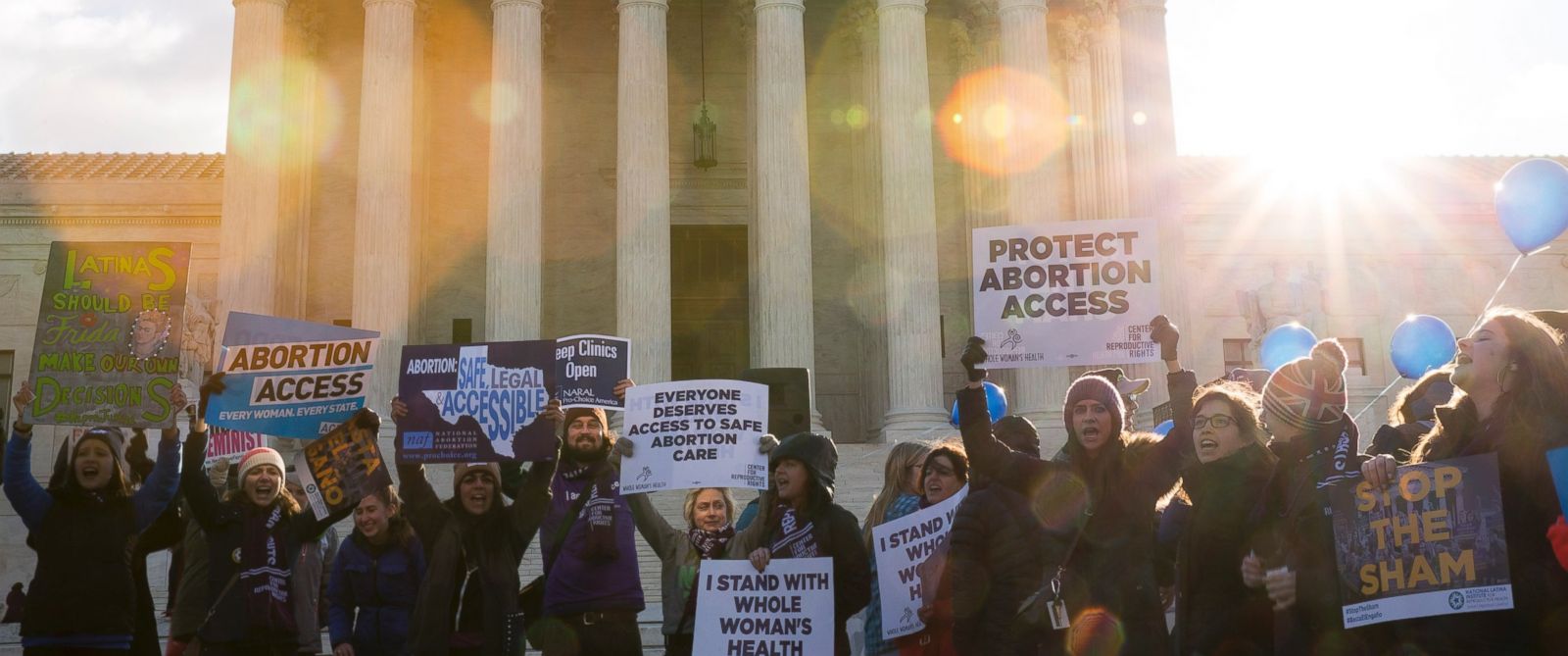
Over the next month, the Supreme Court is expected to weigh in on cases involving some of the major issues before the court and the country -- abortion, affirmative action and immigration. All three cases remain undecided.
The court still has 24 opinions left to release before it recesses for the year in late June. While it’s still traditionally early for the biggest decisions, the eight-member court, which has been eager to issue narrow rulings, could announce big decisions earlier than expected.
What to Know About the Big Immigration Case at the Supreme Court
President Obama Nominates Merrick Garland for Supreme Court
The next round of opinions is expected Monday, June 6.
Here are the three major cases we are watching:
Whole Woman's Health v. Hellerstedt (abortion)
Background:
This has the potential to be the most important abortion case in nearly 25 years. In 2013, Texas passed a law containing: 1) a requirement that abortion providers have admitting privileges at a nearby hospital; and 2) a requirement that abortion facilities comply with the requirements for ambulatory surgical centers.
The plaintiffs in the case are clinics, including Whole Woman’s Health, and doctors that provide abortion services.
Arguments:
Dr. John Hellerstedt, the Commissioner of the Texas Department of State Health Services -- the agency that enforces the challenged law —- argues that Texas is trying to ensure patient safety and improve standards of care. He also argues that it’s the job of legislatures, not courts, to decide whether laws like these are medically necessary.
The plaintiffs argue that there's no evidence that the law promotes health, and that it is actually aimed at impeding women’s access to abortion. If the law goes into effect, they claim, the number of clinics in Texas will drop to 10 or fewer (the law is largely on hold at the moment, while the Supreme Court considers the case).
Possible outcomes:
Justice Anthony Kennedy holds the key vote in this case. If Kennedy thinks the regulations have gone too far, he will likely join the liberal justices in striking them down 5-3. However, if he concludes that the Texas laws are permissible, the Court will likely divide 4-4, affirming the lower court opinion and leaving the regulations in effect, but without setting a precedent for rest of the country outside of the Fifth Circuit.
There’s also the possibility of a procedural decision. The Court could conclude that the plaintiffs did not present sufficient evidence about the capacity of the clinics that would remain in operation if the law went into full effect –- so the Court could send the case back to the trial court for the introduction of more evidence on that question.
Fisher v. University of Texas (affirmative action)
Background:
This case is the second trip to the Supreme Court for Abigail Fisher, a white woman who was denied admission to the University of Texas (UT), and filed a lawsuit challenging the university’s use of race in admissions.
In Fisher’s first case, the Supreme Court ruled that the lower courts were too deferential to school administrators, and were required to look more closely at the evidence. The lower court took another look and stood by its earlier decision, and the case ended up back before the Justices.
Texas has a unique admissions program, which first takes approximately the top 10 percent of graduating seniors in the state, and then uses race as part of a “holistic” analysis (which also includes things like community service, leadership, and family circumstances) in filling the remaining spots.
Arguments:
Fisher’s attorneys argue that the implementation of the top 10 percent program is sufficient to increase minority enrollment, so that there is no need to take race into account when filling the remaining spots.
Fisher attorney Bert Rein said during oral arguments that UT needed to prove that use of race in its admissions process was a “necessary last resort” in pursuing diversity, taking into account reasonably available non-racial alternatives.
On behalf of the university, Gregory Garre argued that UT’s “holistic plan” is necessary to complement its other admissions process and that it has a “meaningful impact on diversity.”
“Now is not the time and this is not the case to roll back student diversity in America,” he said.
Solicitor General Donald Verrilli, who recently stepped down from his position, also argued in support of UT on behalf of the United States.
Possible outcomes:
Justice Elena Kagan is recused in this case, since she worked on it when she was the Solicitor General. The death of Justice Antonin Scalia leaves only seven Justices deciding this case.
A majority of four could still decide the case, but some legal scholars believe there are legitimate concerns about making major constitutional decisions with less than a majority of the full Court.
Given that, there’s a good chance the Court will make a modest decision in this case.
The Court could send the case back yet again, finding that they don’t have enough evidence because the lower court did not hold a full trial on the case.
The justices could also find that the Texas program is unconstitutional because of the existence of the top 10 percent plan, which is a race-neutral approach to diversifying the student body (residential segregation makes that inevitable).
Or the Court could affirm the lower court and find that the Texas plan is perfectly constitutional.
United States v. Texas (immigration)
Background:
Texas and a number of other states challenged President Obama’s executive action on immigration, which would provide “deferred action” –- essentially temporary relief from deportation -— to millions of undocumented immigrants. Obama’s plan would primarily impact the parents of U.S. citizens or lawful permanent residents, but also certain individuals who came to this country as children.
The lower court struck the action down as unlawful and issued a nationwide injunction, and the Fifth Circuit affirmed the injunction. The Supreme Court accelerated its review of the case in order to hear it this term.
Arguments:
The case presents two major questions –- first, whether Texas has “standing” to challenge the president’s action; and second, whether the president’s action was lawful.
Texas and the other states say the plan conflicts with existing immigration statutes by unilaterally granting status to individuals who are in the U.S. illegally.
They also argue that the plan is unconstitutional; that by crafting this plan the president has failed to “take care that the laws be faithfully executed.”
The administration argues that recipients of “deferred action” don’t receive lawful immigration status, but are rather notified that they’re not a deportation priority. This would allow them to “come out of the shadows” and apply for work authorization, according to the White House.
At oral arguments, the Court appeared divided 4-4 both on whether the program was lawful and whether Texas had the ability to challenge it at all.
Possible outcomes:
A 4-4 tie here would leave the lower court opinion in place, preventing the president’s executive action from going into effect, at least in the short term. If one of the conservatives crosses over to join the liberal justices, the White House could begin rolling out the program, which has been on hold while the courts consider it.
The case is unlikely to be decided before the end of June, since it is very complex and was argued very late in the term.
- Publish my comments...
- 0 Comments
